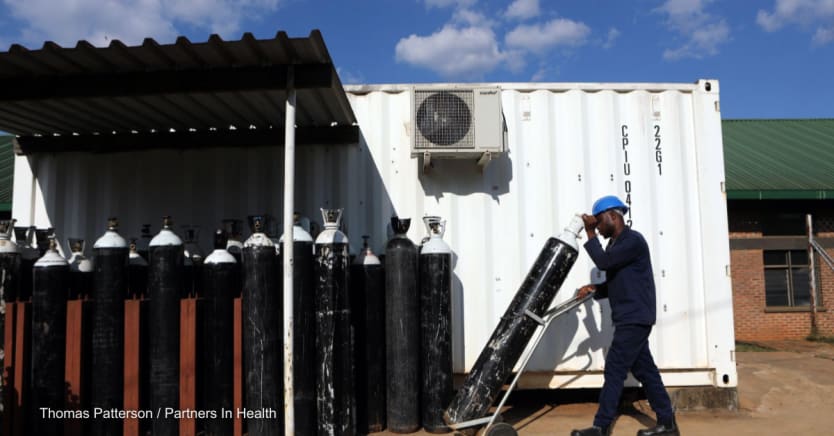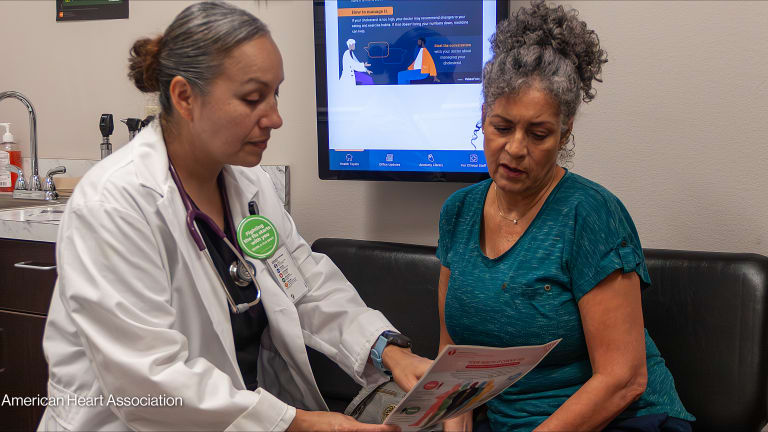
In 1887, 24-year-old Dr. George Holtzapple published the first scientific report on medical treatment with oxygen. It details how he heated glass beakers of powdered potassium chlorate and manganese dioxide over a spirit lamp to create almost pure oxygen and facilitated a full, astonishing recovery for a young man suffering from pneumonia, which was then untreatable.
Toward the end of the article, Holtzapple passionately compared medical oxygen to bread for the hungry. “To say that you are not prepared to administer [oxygen] is no excuse when death is imminent,” he wrote, “for every physician is as well prepared as I was, or soon can be at little expense.”
If only it were so. Today, despite a century and a half of medical progress, many clinicians lack access to essential tools such as oxygen plants, piping, and pulse oximeters — leaving them unable to treat pneumonia, tuberculosis, chronic obstructive pulmonary disease, newborn prematurity, and many other conditions. As a result, 80% of the nearly 40 million patients who need oxygen each year in low- and middle-income countries don’t get it, and too many die.
The COVID-19 pandemic brought new levels of attention to this oxygen crisis, and the global health community is currently making an unprecedented push for solutions via new mechanisms such as the Global Oxygen Alliance, or GO2AL, and a Lancet Global Health Commission on medical oxygen security. Perhaps the most inspiring is a bold resolution on access to medical oxygen that will be considered by the World Health Assembly, or WHA, in Geneva this week.
However, when it comes to the question of whether these initiatives will succeed, the rubber will meet the road in LMICs. And based on my experience — as a pulmonary and critical care physician using and helping to build medical oxygen systems on five continents — I see three key priorities for the implementation of universal oxygen access.
1. Move from oxygen availability to oxygen security.
First, we need to raise our ambitions and move from oxygen availability to oxygen security, as the Lancet Commission name suggests. Brigham and Women’s Hospital in Boston, where I treat patients in the Intensive Care Unit, doesn’t plan for the mere presence of oxygen — it plans for oxygen security, which means always having enough to treat every patient. And that should be the case everywhere.
Effective treatment with medical oxygen requires the right amount at the right time, with a close to zero margin for error. My colleagues and I at Partners In Health, or PIH, where I also work, have witnessed catastrophic effects from oxygen shortages lasting just minutes. Only oxygen security can prevent these tragedies.
What does oxygen security look like? Every referral hospital in the world should have a large volume oxygen source, such as a liquid oxygen tank or pressure swing adsorption plant, delivering piped oxygen to every bed. They also need enough filled oxygen cylinders to provide at least 24 hours of emergency backup. These higher-resourced referral hospitals would then distribute oxygen cylinders to primary facilities, where oxygen concentrators can supplement and serve as a backup. In short, we need comprehensive and redundant regional networks of oxygen supply.
2. Apply a nuanced approach to oxygen demand.
Second, we need a nuanced approach to defining how much oxygen is needed. The WHA resolution urges countries “to assess the scale of medical oxygen access gaps in their health systems … in order to provide patients with the required amounts.” But unfortunately, existing assessments are biased toward underestimating countries’ true needs. For example, a retrospective independent assessment found that Bangladesh’s peak oxygen demand during the COVID-19 pandemic was three-fold higher than government estimates at the time.

Most estimates of the gap between supply and demand depend in part on assumptions derived from historical data or present-day service availability. But from our experience at PIH, many more patients are diagnosed once the resources are made available to treat a disease, making past experience only a rough guide to future demand.
Opinion: Adopting WHO's oxygen resolution is imperative to save lives
The World Health Organization has announced its plan to introduce the Increasing Access to Medical Oxygen resolution. This is a significant milestone in global health efforts in low- and middle-income countries.
There are also more technical reasons for systematic underestimation. For example, because of limitations, such as lower pressures, 10 oxygen concentrators producing a total of six cubic meters per hour of oxygen cannot treat the same number or types of patients as a PSA plant delivering the same volume via piping. This isn’t always accounted for.
3. Articulate a pathway to sustainability.
Lastly, we must clearly articulate our pathway to sustainability. Since its launch in February 2021, the Unitaid-led Access to COVID-19 Tools Accelerator Oxygen Emergency Taskforce — a global collaboration intended to speed up, among other things, access to COVID-19 treatments, including oxygen therapy — has mobilized significant resources to address the global oxygen crisis. But this is a relatively brief period compared to, for example, the decade spent increasing global access to antiretroviral therapy for people living with HIV from 25% to 75%.
The recent transition of the ACT-Accelerator Oxygen Emergency Taskforce to the GO2AL reflects the need for ongoing support toward sustainability. The GO2AL will promote coordinated global and national efforts to create and maintain robust oxygen ecosystems. Funding these efforts, however, remains an issue. In 2021, for example, the therapeutics pillar of the ACT-Accelerator raised only $200 million of its target of $2.5 billion.
The Kingdom of Lesotho provides a good example of progress to date and the work that remains. In 2022, with support from Unitaid and in collaboration with the Ministry of Health, PIH established a sophisticated national oxygen network, distributing filled oxygen cylinders throughout the largely rural, mountainous country, and maintaining and repairing medical oxygen infrastructure such as PSA plants and oxygen concentrators.
The MOH has since gone on to install additional oxygen plants and is developing a national oxygen strategy and a critical care strategy. However, the country still lacks trained biomedical staff, many frontline providers are still learning the nuances of medical oxygen administration, and expert support is needed to launch the implementation of the national oxygen and critical care strategies. Several years of work remain before we can reach sustainability — in Lesotho and around the world.
Achieving sustainable oxygen security will not be easy or fast, but it is worth the investment — medical oxygen costs less than $30 per disability-adjusted life-year averted, a measure of overall disease burden, expressed as the number of years lost due to ill health, disability, or early death. But more importantly, we can’t forget that every day, patients are literally gasping for it.
For more information, visit https://www.pih.org/oxygen






